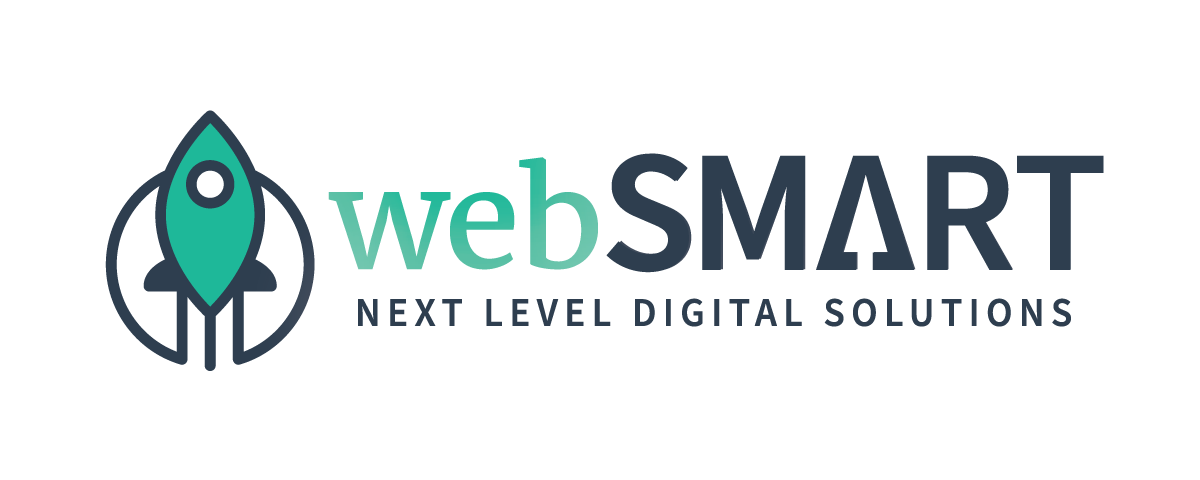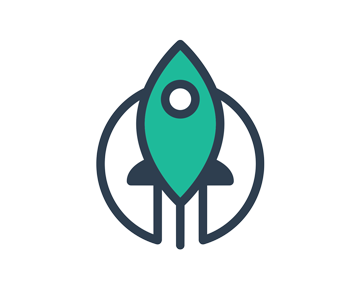Website Optimization: 5 Tips to Make the Most of Your Site
The internet has revolutionized nonprofit engagement, making websites a principal venue for volunteer recruitment, donation collection, and cause education. Even if your organization has a strong in-person, community presence, there’s a decent chance that your website is one of the first places a prospective supporter interacts with your nonprofit.
This is especially true when you consider current events and the COVID-19 pandemic canceling most [if not all] in-person engagement. If a supporter is engaging with your organization now, they’re doing so by digital means. It’s time to optimize your website to prepare for this increased reliance on digital engagement.
Whether optimizing for accessibility, focusing on location-based digital marketing, or emphasizing strong storytelling, there are quite a few ways your organization can make the most of your web presence.
At DNL OmniMedia, we design nonprofit websites that help organizations meet their fundraising goals. To ensure that your website makes the most of your web presence, start by:
Abiding by website compliance and accessibility standards.
Optimizing your page for SEO best practices.
Applying for outside opportunities to boost your website’s visibility.
Integrating your CMS with your other software solutions.
Remembering the value of strong storytelling.
Are you ready to make the most of your website? Let’s dive in.

Carl Diesing, Managing Director, DNL OmniMedia
Carl co-founded DNL OmniMedia in 2006 and has grown the team to accommodate clients with on-going web development projects. Together DNL OmniMedia has worked with over 100 organizations to assist them with accomplishing their online goals. As Managing Director of DNL OmniMedia, Carl works with nonprofits and their technology to foster fundraising, create awareness, cure disease, and solve social issues. Carl lives in the Hudson Valley with his wife Sarah and their two children Charlie and Evelyn.
Abiding by website compliance and accessibility standards.

Your nonprofit’s website functions as your “home” on the internet. It’s the digital location that supporters visit to learn about your organization, discover opportunities to get involved, and even donate to benefit your cause.
When your physical headquarters is concerned, you work to create an atmosphere of inclusivity and accessibility to encourage supporters to get involved. Shouldn’t you do the same with your website?
This is where nonprofit website accessibility and compliance comes into play. Regulatory compliance and overall accessibility refers to ensuring your website is abiding by Americans with Disabilities Act [ADA] standards. This ensures that all supporters can engage with your content, regardless of their abilities.
The Web Content Accessibility Guidelines [WCAG] have set standards that define the best ways to ensure accessibility on your site. They sort accessible design into four key categories:
1
Perceivable
Information
Whether text, images, or videos, all users should be able to access and utilize content on your site.
2
Operable
Navigation
Users should be able to navigate through your website whether they’re using a trackpad, mouse, or keyboard.
3
Understandable
Information
Content should be structured in a logical manner, something that’s especially crucial for viewers using text to speech devices.
4
Robust
Content
The back-end of your website should be logically structured, ensuring that all browsers and assistive devices can process it.
Web compliance can certainly be a complex topic to understand — especially in just a few paragraphs. Learn how to optimize your website to meet these essential accessibility standards with this DNL OmniMedia guide to nonprofit web compliance.
Optimizing your page for SEO best practices.
There’s little use in having an accessible website if your supporters are unable to find it to begin with. The internet is an immense landscape, with a variety of causes and organizations competing for your donors’ attention. Search engine optimization [SEO] is the process that ensures your website stands out from the crowd.
SEO refers to the ways you can optimize your website to land higher on search engine results page [SERP] rankings. It’s a combination of being perceivable by search engines and valuable to website visitors. There are a wide variety of ways you can optimize your site, but for now, let’s just explore a few key tips:

CONDUCT AN AUDIT.
If any links on your site are broken [providing a 4XX error, for example], it’s imperative to resolve this for user experience and to signal to Google that your website is well-maintained. Conduct an audit to get an overview of any issues on your site.
ENSURE YOU’RE PROVIDING VALUABLE INFORMATION.
You may have heard the phrase “Content is King.” The easiest way to improve your website today is to provide a wealth of valuable content to visitors.
ABIDE BY ON-PAGE BEST PRACTICES.
For example, add a title, meta description, and heading tags to your pages and alternative text to your images. This has accessibility benefits as well!
PRIORITIZE USER EXPERIENCE.
Consider the load speed of your page and mobile accessibility. If your pages load slowly or aren’t viewable on mobile devices, it’s time for an update!
LEVERAGE LOCAL SEO TO BOOST YOUR ORGANIZATION.
Local SEO marketing involves creating a Google My Business listing, which will associate your site with branded keywords [ex: your organization’s name] and local keywords [ex: someone searches for your cause, in your area].
While there are technical SEO steps you can take to ensure your website stands out from the crowd, remember that user experience trumps all. So, if you prioritize the content on your website and provide value to your nonprofit’s supporters, you’ll be off to a great start.
Applying for outside opportunities to boost your website’s visibility.
In addition to making SEO and accessibility updates to your website, nonprofit organizations like yours are also privy to a unique web opportunity: Google AdWords Grants.
Essentially, Google provides grants to eligible nonprofits [$10,000 per month] to spend on AdWords advertisements. These ads are served to individuals who search the associated keyword, positioned at the top of the SERP directing visitors to your nonprofit’s website.
The requirements for one of these grants are fairly straightforward. You must be:
Registered as a charitable organization as defined by your country.
Registered with TechSoup.
Not a government, healthcare, school, or educational institution.
Associated with a functional website to receive ad traffic.

If your organization meets these requirements, you can enroll in Google Grants. Approval takes anywhere from 2-10 days, and after that, you can get started with your Google AdWords account.
Making the most of your Google Grant and attracting visitors to your nonprofit’s website requires more than funding, however. A strong Google Grant management strategy is essential, something you can read more about in this guide.
Integrating your CMS with your other software solutions.
Your website was likely built using a content management system [CMS], such as WordPress, Wix, Squarespace, or another platform. Integrating your CMS with your other software solutions is a huge step toward making the most of your website.
Why is that?
For one, your website collects a massive amount of information as users interact with it. If you can capture that data, you can use it to inform future fundraising and marketing efforts. Further, if you can embed fundraising and event information directly on your site, visitors will be more likely and comfortable interacting with those opportunities.
Which platforms should you integrate your CMS with? Here are a few ideas:
Constituent Relationship Management [CRM] Software
With this integration, your CRM can collect all data that flows into your CMS such as email list sign-ups and visit frequency and duration.
Online Giving Databases
For example, if you use a matching gift database to discover corporate matching gift program opportunities, you can embed that database directly onto your website for users to search for their own eligibility.
Online Giving Software
An online giving software integration allows you to directly embed a digital giving page on your website. Allowing donors to give directly through your site, rather than through a third-party page, increases their trust and ensures you’ve got tidy donation and transaction records on your end.
Email Marketing Software
When your website integrates with your email marketing software, you can accept newsletter sign-ups directly on your site and have that information flow directly into your marketing tool.
Integrating your website with your other software solutions enables you to utilize every aspect of the site, including the data it captures. Ensure your web designer is able to navigate such connections and if not, consider bringing in a nonprofit technology consultant to help manage the effort.
Remembering the value of strong storytelling.
Check out this Morweb listing of 10 top nonprofit websites. What do they all have in common? Attractive design, accessibility, and strong storytelling.
Storytelling is an essential aspect of effective marketing, long seen as a rising trend with social media. To truly catch a donor’s attention, encourage them to interact with your site, and inspire them to give or otherwise engage with your organization, you need to tell a compelling story.
There are a few tips to carry strong storytelling across your website:

Include the most important information ABOVE THE FOLD.
Drawing on long-held newspaper terminology, this refers to ensuring all essential information is viewable toward the top of your page, or before a user begins scrolling.

Be genuine and trustworthy.
Visitors tend to respond badly to ad-heavy, ingenuine communications. Share true stories of your nonprofit at work and donors will appreciate your transparency!

Tell a story on every page.
Every page doesn’t need to contain a blog post-worth of content. However, consider incorporating storytelling elements on each page— even if it’s just a short sentence about how your cause is impacted by a donor’s engagement!

Use a variety of media to tell your story.
Text is a powerful tool, but if it’s the only tool you use, your users may lose interest. Consider using images, video, and graphics to truly illustrate the story of your nonprofit across your website.
Your organization is completing essential work toward a good cause, and that in itself is a worthwhile story to tell! Communicating it effectively across your website ensures that all site visitors understand the value of engaging with your nonprofit’s opportunities.
Optimize Your Site
Your website has long been a powerful tool to reach donors, and that’s especially true during this time of COVID-19 mandated social distancing. If your site isn’t operating at its full potential, now is the perfect time to address that!
With these tips, you’ll optimize your site for user experience, search engine crawlers, and even internal needs. You’ll stand out from the crowd and improve internal operations at the same time.








